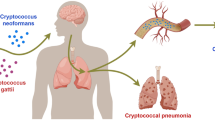Opinion statement
Treatment of chronic meningitis depends on the underlying cause. Once a specific cause has been established, appropriate targeted therapy is initiated. When the cause is unknown, a decision must be made whether to employ empiric therapy while the diagnostic evaluation is ongoing. This decision is based on three factors: 1) the clinical status of the patient; 2) the most likely cause based on demographic, historical, examination, and initial laboratory data; and 3) the risk-to-benefit ratio of the proposed treatment regimen. Initial efforts focus on deciding whether the meningitis is infectious or noninfectious. When a decision is made to start empiric therapy, antituberculous treatment is generally given for several weeks to judge therapeutic response. Patients who do not respond to antituberculous therapy are next treated with broad-spectrum antibiotics for unusual bacterial pathogens such as Actinomyces (penicillin), the Lyme disease spirochete Borrelia burgdorferi (ceftriaxone), Brucella (doxycycline plus rifampin), or Francisella tularensis (streptomycin plus gentamicin). Antifungal therapy is generally reserved for patients who are at particular risk for mycotic infection (owing to underlying immunosuppression or an extraneural infection site). Finally, empiric glucocorticoids are generally reserved for patients with consistently negative culture results and a probable noninfectious cause.
Similar content being viewed by others
References and Recommended Reading
Anderson NE, Willoughby EW: Chronic meningitis without predisposing illness—a review of 83 cases. Q J Med 1987, 63:283–295.
Tandon PN: Tuberculous meningitis (cranial and spinal). In Infections of the Nervous System, Part 1 (Handbook of Clinical Neurology, vol 23). Edited by Vinken PJ, Bruyn GW. Amsterdam: Elsevier/North Holland; 1978:195–262.
Cheng TM, O’Neill BP, Scheithaer BW, Piepgras DG: Chronic meningitis: the role of meningeal or cortical biopsy. Neurosurgery 1994, 34:590–596.
Anderson NE, Willoughby EW, Synek BJL: Leptomeningeal and brain biopsy in chronic meningitis. Aust NZ J Med 1995, 25:703–706.
Van Scoy RE, Wilkowske CJ: Antimycobacterial therapy. Mayo Clin Proc 1999, 74:1038–1048.
Davis LE: Fungal infections of the central nervous system. Neurol Clin 1999, 17:761–781.
Patel R: Antifungal agents. Part I. Amphotericin B preparations and flucytosine. Mayo Clin Proc 1998, 73:1205–1225. This is an excellent recent review of the major antifungal drug.
Leenders ACAP, Reiss P, Portegies P, et al.: Liposomal amphotericin B (Ambisome) compared with amphotericin B both followed by oral fluconazole in the treatment of AIDS-associated cryptococcal meningitis. AIDS 1997, 11:1463–1471. This randomized study of HIV-infected patients with cryptococcal meningitis documented faster CSF sterilization and less toxicity with a lipid form of amphotericin B. It did not, however, show greater clinical efficacy.
Saag MS, Cloud GA, Graybill JR, et al.: A comparison of itraconazole versus fluconazole as maintenance therapy for AIDS-associated cryptococcal meningitis. Clin Infect Dis 1999, 28:291–296. This randomized study found fluconazole (200 mg/d) to be superior to itraconazole as maintenance therapy for cryptococcal meningitis in HIV-positive patients. Lack of addition of flucytosine to amphotericin B in the first 2 weeks of treatment was the major factor associated with relapse.
Coyle PK: Glucocorticoids in CNS bacterial infection. Arch Neurol 1999, 56:796–801.
Dooley DP, Carpenter JL, Rademacher S: Adjunctive corticosteroid therapy for tuberculosis: a critical reappraisal of the literature. Clin Infect Dis 1997, 25:872–887.
Hopkins AP, Harvey PKP: Chronic benign lymphocytic meningitis. J Neurol Sci 1973, 18:443–453.
Smith JE, Aksamit AJ: Outcome of chronic idiopathic meningitis. Mayo Clin Proc 1994, 69:548–556.
Charleston AJ, Anderson NE, Willoughby EW: Idiopathic steroid-responsive chronic lymphocytic meningitis —clinical features and long-term outcome in 17 patients. Aust NZ J Med 1998, 28:784–789.
Jacobs RA, Guglielmo BJ: Anti-infective chemotherapeutic and antibiotic agents. In Current Medical Diagnosis and Treatment, edn 39. Edited by Tierney LM, McPhee SJ, Papadakis MA. New York: Lange Medical Books/McGraw Hill; 2000:1476–1519. Ani excellent brief review of antimicrobials.
Van der Horst CM, Saag MS, Cloud GA, et al.: Treatment of cryptococcal meningitis associated with the acquired immunodeficiency syndrome. N Engl J Med 1997, 337:15–21. In this controlled trial, induction therapy for 2 weeks with amphotericin B plus flucytosine was superior to amphotericin B alone.
Mylonakis E, Merriman NA, Rich JD, et al.: Use of cerebrospinal fluid shunt for the management of elevated intracranial pressure in a patient with active AIDSrelated cryptococcal meningitis. Diagn Microbiol Infect Dis 1999, 34:111–114.
Park MK, Hospenthal DR, Bennett JE: Treatment of hydrocephalus secondary to cryptococcal meningitis by use of shunting. Clin Infect Dis 1999, 28:629–633.
Garcia-Monco JC: Central nervous system tuberculosis. Neurol Clin 1999, 17:737–759.
Tsenova L, Bergtold A, Freedman VH, et al.: Tumor necrosis factor alpha is a determinant of pathogenesis and disease progression in mycobacterial infection in the central nervous system. Proc Natl Acad Sci U S A 1999, 96:5657–5662.
Author information
Authors and Affiliations
Rights and permissions
About this article
Cite this article
Coyle, P.K. Chronic meningitis. Curr Treat Options Neurol 2, 375–387 (2000). https://doi.org/10.1007/s11940-000-0055-5
Issue Date:
DOI: https://doi.org/10.1007/s11940-000-0055-5




